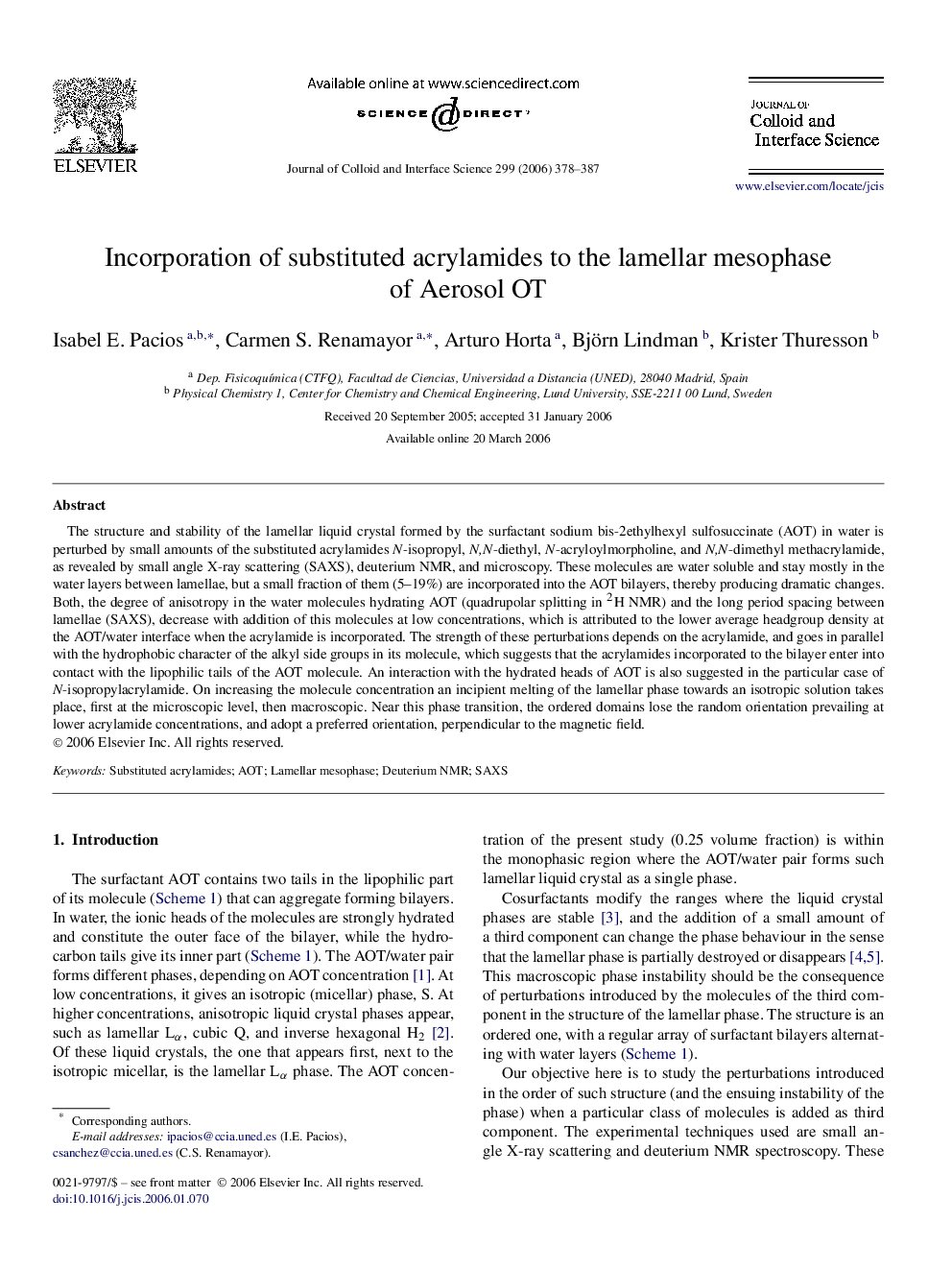| Article ID | Journal | Published Year | Pages | File Type |
|---|---|---|---|---|
| 613309 | Journal of Colloid and Interface Science | 2006 | 10 Pages |
The structure and stability of the lamellar liquid crystal formed by the surfactant sodium bis-2ethylhexyl sulfosuccinate (AOT) in water is perturbed by small amounts of the substituted acrylamides N-isopropyl, N,N-diethyl, N-acryloylmorpholine, and N,N-dimethyl methacrylamide, as revealed by small angle X-ray scattering (SAXS), deuterium NMR, and microscopy. These molecules are water soluble and stay mostly in the water layers between lamellae, but a small fraction of them (5–19%) are incorporated into the AOT bilayers, thereby producing dramatic changes. Both, the degree of anisotropy in the water molecules hydrating AOT (quadrupolar splitting in 2H NMR) and the long period spacing between lamellae (SAXS), decrease with addition of this molecules at low concentrations, which is attributed to the lower average headgroup density at the AOT/water interface when the acrylamide is incorporated. The strength of these perturbations depends on the acrylamide, and goes in parallel with the hydrophobic character of the alkyl side groups in its molecule, which suggests that the acrylamides incorporated to the bilayer enter into contact with the lipophilic tails of the AOT molecule. An interaction with the hydrated heads of AOT is also suggested in the particular case of N-isopropylacrylamide. On increasing the molecule concentration an incipient melting of the lamellar phase towards an isotropic solution takes place, first at the microscopic level, then macroscopic. Near this phase transition, the ordered domains lose the random orientation prevailing at lower acrylamide concentrations, and adopt a preferred orientation, perpendicular to the magnetic field.
Graphical abstractFigure optionsDownload full-size imageDownload as PowerPoint slide
